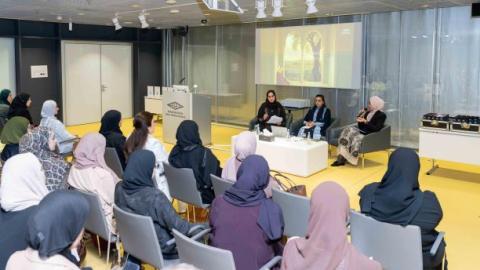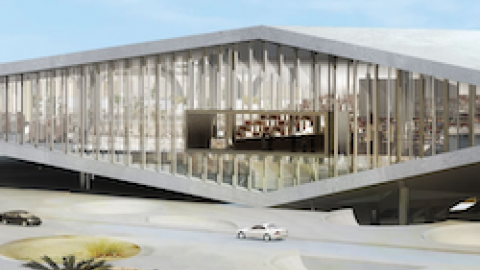
Leading international architects discussed Qatar’s architectural progress at a panel discussion held today at Qatar National Library. The event was attended by Her Excellency Sheikha Al Mayassa bint Hamad Al-Thani, Chairperson of Qatar Museums.
The panel discussion, “Architecture as Face of a Nation,” organized in celebration of the opening of the National Museum of Qatar, explored how cultural institutions and architectural landmarks represent a nation’s identity.
The panel featured: Rem Koolhaas, the Library’s architect; Jean Nouvel, architect of the National Museum of Qatar; Jacques Herzog, renowned Swiss architect; Ibrahim Jaidah, Qatari architect and founder of the Arab Engineering Bureau; and Ben van Berkel, Dutch architect, founder and principal architect of the architectural practice United Work Studio.
“Architecture is not a new concept in Qatar, there has always been an architectural vision for how Doha should look like. We were not the first architects here, there were architects before who followed a master plan and a specific vision. We are helping construct new Qatar, and at the same time, Qatar is also helping us as architects to stay relevant.” said Rem Koolhaas.
Speaking about what inspired him to design the National Museum of Qatar in the shape of a desert rose, Jean Nouvel said: “I wanted to give a symbol linked to the eternity of the desert and at the same time to the dynamism and modernism of the Qatar of today. A desert rose is created over millenniums through the sand and the wind, with an intersection of blades in a random and complex system. And when you have this symbol of the desert on such a scale, it becomes something very heroic from a scientific and technical point of view.”
“It is a great honour to be around genius architects in Qatar. Early in my career, identity was defined as what we see of the older buildings around us. By the mid-1990s, we saw a cultural movement and transition in Doha’s architecture. When genius architects started coming, we began to redefine our identity. Now we are redefining our identity and this is the beauty of having such architects working here, which will help our younger architects in many ways,” said Ibrahim Jaidah.
“Every place has a specific characteristic, which makes it interesting for architects. In Doha, for example, the sea meets the land in an interesting way, which helps me as a Dutch architect get a new perspective on design and architecture. Qatar therefore has one of the best settings for architects to be creative and try new ideas,” said Ben van Berkel.
A lively question-and-answer session with the audience followed the panel discussion, during which students of architecture, subject enthusiasts, and members of the general public were able to address the architects.







